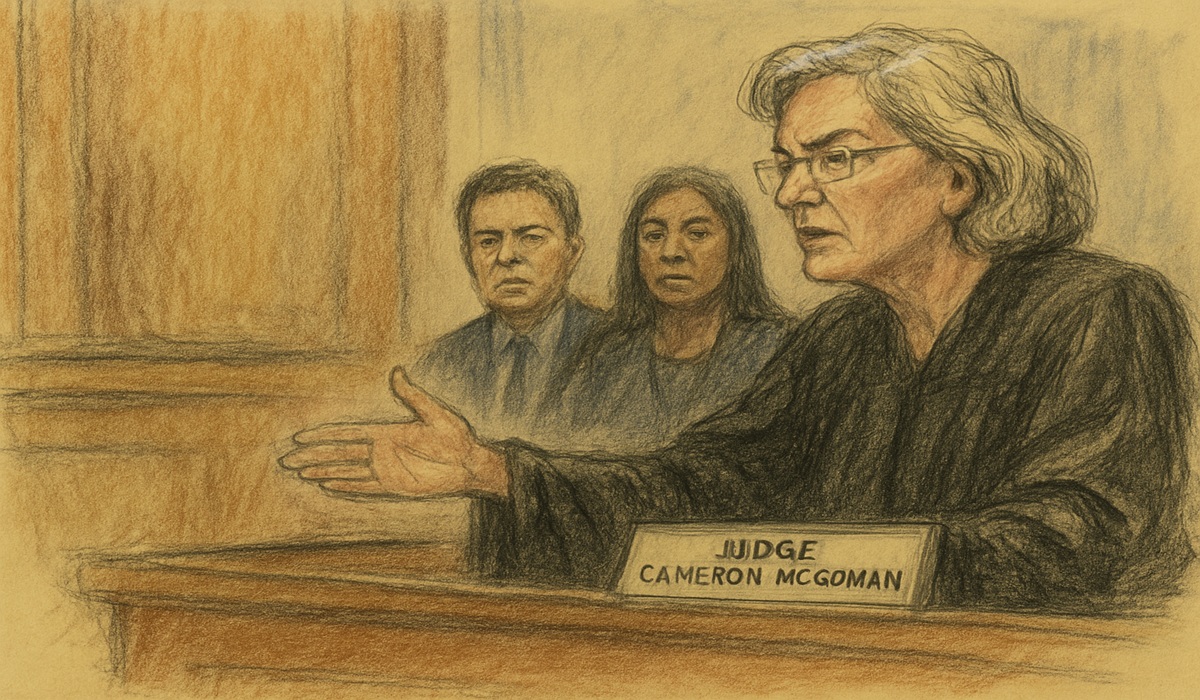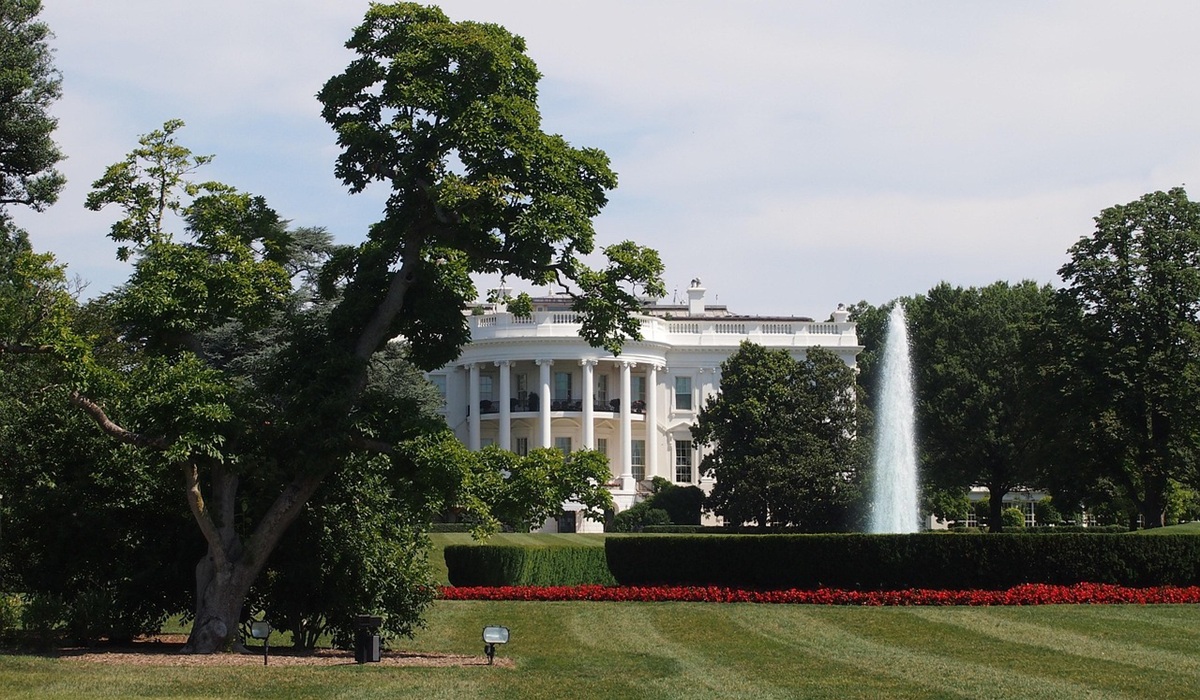Two Young Lives in Critical Condition: What the DC National Guard Shooting Is Forcing Us to Confront
- Ingrid Jones
- U.S.A
- November 27, 2025

There is something especially jarring about violence when it interrupts the ordinary rhythm of duty. The two National Guard members who were shot in Washington, DC were not on a battlefield. They were not storming a building in a foreign land or engaged in a covert operation under darkness. They were simply doing their jobs, serving in a domestic capacity, in a city that is supposed to be fortified by layers of protection, planning, and presence. Both victims are in their early 20s, just at the threshold of adult life, and both remain in critical condition. Their youth alone makes the impact of this moment heavier, more personal, and harder to process.
The idea that someone could walk close enough to carry out a point-blank shooting in the nation’s capital is disturbing. The phrase “point-blank” lingers because it suggests more than violence. It suggests proximity. It suggests intent. It suggests a moment in which there was no barrier between life and death. These were not distant victims of an abstract incident. They were face to face with the person who changed the rest of their lives in a matter of seconds.
What has further unsettled the story is what is now emerging about the suspect. According to officials, the alleged shooter drove from his home in Washington state all the way to DC in the lead-up to the incident. That alone implies planning, determination, and conscious movement toward a chosen location. This was not random in the way that many acts of violence are. Distance matters. Intention matters. When someone crosses an entire country to arrive at the scene of an act like this, it forces a much deeper examination of motive and meaning.
Even more complex is the revelation that the suspect is Afghan and, according to the CIA director, previously worked with the CIA and U.S. forces in Afghanistan. He is said to have been part of a partner force in Kandahar, a collaboration that ended shortly after the chaotic U.S. withdrawal from the country. In the wake of that withdrawal, the Biden administration authorized the relocation of thousands of Afghans who had assisted American operations, and the alleged shooter was among those brought to the United States in September 2021 due to his past cooperation with U.S. agencies.
This alone opens a deeply uncomfortable and emotionally charged conversation. When the United States withdrew from Afghanistan, it did so in a cloud of controversy, confusion, and trauma. Images of desperate crowds at the airport, abandoned equipment, and desperate pleas for safe passage became burned into the global consciousness. In that chaos, moral obligations collided with logistical realities. The government was forced to make fast decisions about who to bring back, who to protect, and who would be left behind. Those decisions were framed as acts of responsibility and gratitude to those who had put their lives on the line for American interests. Today, that same decision is now entangled in an act of violence on American soil.
This is not a simple story of immigration. This is not a straightforward case of military conflict spilling over into civilian life. It is a story about the ripple effects of war, about the invisible scars carried by those who survive it, and about what happens when experience, trauma, and broken systems collide in a new environment. It forces an introspective look at the long shadows cast by foreign policy decisions long after the headlines have faded.
The two young guards who now lie in critical condition represent the present. The alleged shooter, and his history of involvement with U.S. operations in Afghanistan, represents the unresolved past. And suspended between the two is the question of accountability, responsibility, and the real cost of decisions made in emergency rooms of power.
Military service is often spoken about in noble, patriotic language, but stories like this strip away the romance and leave only the raw reality. These soldiers were not fighting for abstract ideals in this moment. They were simply existing within the sphere of their duty. Their injuries are not symbols in a political argument. They are real wounds in real bodies that belong to real families who are holding their breath for an update that keeps them alive one more hour, one more day.
At the same time, this incident has reignited conversations around vetting processes, refugee and resettlement programs, intelligence cooperation, and the unintended consequences of global interventions. People are asking how someone connected to U.S. intelligence operations could later stand accused of such violence. Was there a psychological break? A political shift? A mental health collapse that went unnoticed? Or is there something even deeper at play, something tied to identity, displacement, betrayal, or unresolved conflict?
These questions will not be answered quickly, and some may never be answered fully at all. But they matter. They matter because not asking them is how history repeats itself.
For now, the nation waits for updates on two young lives that hang in the balance. They are more than soldiers. They are sons. They are friends. They are the beginning of stories interrupted too soon. And in their suffering, a much larger story is unfolding: one about loyalty, about the consequences of war, about the fragile line between protector and protected, and about the price a society pays when its past refuses to stay buried.
This is not just a violent incident in Washington, DC. It is a reflection of unfinished wars, unresolved policy, and the deeply human cost of decisions made far from home yet felt most painfully within it.
Image Credit, Levi Meir Clancy
Two Young Lives in Critical Condition: What the DC National Guard Shooting Is Forcing Us to Confront
There is something especially jarring about violence when it interrupts the ordinary rhythm of duty. The two National Guard members who were shot in Washington, DC were not on a battlefield. They were not storming a building in a foreign land or engaged in a covert operation under darkness. They were simply doing their jobs, serving in a domestic capacity, in a city that is supposed to be fortified by layers of protection, planning, and presence. Both victims are in their early 20s, just at the threshold of adult life, and both remain in critical condition. Their youth alone makes the impact of this moment heavier, more personal, and harder to process.
The idea that someone could walk close enough to carry out a point-blank shooting in the nation’s capital is disturbing. The phrase “point-blank” lingers because it suggests more than violence. It suggests proximity. It suggests intent. It suggests a moment in which there was no barrier between life and death. These were not distant victims of an abstract incident. They were face to face with the person who changed the rest of their lives in a matter of seconds.
What has further unsettled the story is what is now emerging about the suspect. According to officials, the alleged shooter drove from his home in Washington state all the way to DC in the lead-up to the incident. That alone implies planning, determination, and conscious movement toward a chosen location. This was not random in the way that many acts of violence are. Distance matters. Intention matters. When someone crosses an entire country to arrive at the scene of an act like this, it forces a much deeper examination of motive and meaning.
Even more complex is the revelation that the suspect is Afghan and, according to the CIA director, previously worked with the CIA and U.S. forces in Afghanistan. He is said to have been part of a partner force in Kandahar, a collaboration that ended shortly after the chaotic U.S. withdrawal from the country. In the wake of that withdrawal, the Biden administration authorized the relocation of thousands of Afghans who had assisted American operations, and the alleged shooter was among those brought to the United States in September 2021 due to his past cooperation with U.S. agencies.
This alone opens a deeply uncomfortable and emotionally charged conversation. When the United States withdrew from Afghanistan, it did so in a cloud of controversy, confusion, and trauma. Images of desperate crowds at the airport, abandoned equipment, and desperate pleas for safe passage became burned into the global consciousness. In that chaos, moral obligations collided with logistical realities. The government was forced to make fast decisions about who to bring back, who to protect, and who would be left behind. Those decisions were framed as acts of responsibility and gratitude to those who had put their lives on the line for American interests. Today, that same decision is now entangled in an act of violence on American soil.
This is not a simple story of immigration. This is not a straightforward case of military conflict spilling over into civilian life. It is a story about the ripple effects of war, about the invisible scars carried by those who survive it, and about what happens when experience, trauma, and broken systems collide in a new environment. It forces an introspective look at the long shadows cast by foreign policy decisions long after the headlines have faded.
The two young guards who now lie in critical condition represent the present. The alleged shooter, and his history of involvement with U.S. operations in Afghanistan, represents the unresolved past. And suspended between the two is the question of accountability, responsibility, and the real cost of decisions made in emergency rooms of power.
Military service is often spoken about in noble, patriotic language, but stories like this strip away the romance and leave only the raw reality. These soldiers were not fighting for abstract ideals in this moment. They were simply existing within the sphere of their duty. Their injuries are not symbols in a political argument. They are real wounds in real bodies that belong to real families who are holding their breath for an update that keeps them alive one more hour, one more day.
At the same time, this incident has reignited conversations around vetting processes, refugee and resettlement programs, intelligence cooperation, and the unintended consequences of global interventions. People are asking how someone connected to U.S. intelligence operations could later stand accused of such violence. Was there a psychological break? A political shift? A mental health collapse that went unnoticed? Or is there something even deeper at play, something tied to identity, displacement, betrayal, or unresolved conflict?
These questions will not be answered quickly, and some may never be answered fully at all. But they matter. They matter because not asking them is how history repeats itself.
For now, the nation waits for updates on two young lives that hang in the balance. They are more than soldiers. They are sons. They are friends. They are the beginning of stories interrupted too soon. And in their suffering, a much larger story is unfolding: one about loyalty, about the consequences of war, about the fragile line between protector and protected, and about the price a society pays when its past refuses to stay buried.
This is not just a violent incident in Washington, DC. It is a reflection of unfinished wars, unresolved policy, and the deeply human cost of decisions made far from home yet felt most painfully within it.








